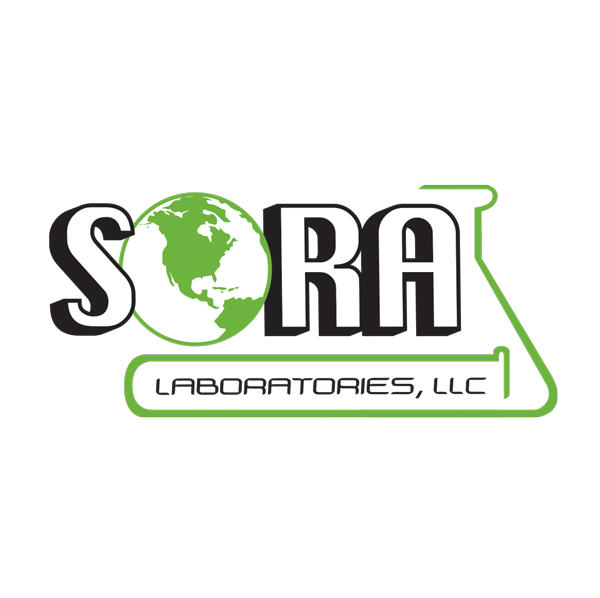Forsyth, MO—SORA Labs recently welcomed Quality Supervisor, David Gauwitz to their accomplished QC team. David brings nearly 35 years of proven, award-winning experience to further enhance the level of excellence that SORA is known for. As Quality Supervisor, David will be working on the continual improvement of ISO process management while supporting the lab to meet the highest quality standards.
Leading the quality team is Lab/Quality Manager, Bob Williams and Technical Manager, Ramona Clemens. Ensuring accurate results takes continual verification of generated data. As the lab continues to grow, calibrations and data testing, along with “Out of Specification” investigations and analysis, become a larger undertaking to maintain the same high quality standards. David will further enhance SORA’s ability to meet customer deadlines, along with ensuring every piece of the quality control process fits together.
Known for its consistently accurate and precise results, SORA Labs has a quality system in place that will withstand even the toughest scrutiny. SORA Laboratories is registered with two different internationally recognized ISO standards: an ISO 9001:2008 certification and ISO 17025:2005 accreditation. These standards represent quality, accurate testing, designed to give customers peace of mind.
###
For over 20 years, SORA Labs has been specializing in enzyme assays, probiotic testing, nutraceutical and agricultural testing methodology, along with being the foremost expert in testing for quality and potency in natural ingredients, raw materials and finished products. SORA Labs has dedicated itself to perfecting methodologies, performing analytical tests and developing procedures to be a one-of-a-kind testing facility. For more information, visit soralabs.com.
Probiotic testing challenges—the right lab makes all the difference!
Probiotic testing can be complicated. Here’s why—most of the testing methods available are for single strain raw materials. Additionally, many methods come from the manufacturer and are specific to their material. And if that didn’t create enough confusion about what testing was appropriate, the Food Chemical Codex (FCC) has also added several probiotic monographs. These monographs have procedures for identification, enumeration assays and specific Whew! So how can you decide which testing method to use—the answer lies within using a lab that is experienced in probiotics.
An experienced lab like SORA, will know that the identification portion of the FCC monograph is for nucleic acid-based identification using PCR or other genetic identification methods. The assay portion of the monograph uses various growth media and specific aerobic or anaerobic conditions for optimal growth of the probiotic strain. The specific test section will have testing recommendations for that particular strain of probiotic.
Since these procedures require specialized equipment, and specific agars and broths to perform the testing, this can be challenging due to the high growth counts of this material. Typically in a microbiology lab, the samples being tested have very low plate counts, but with probiotic material, high counts in the millions or even billions of cfu/g are expected. Lab contamination is also a concern when working with probiotics, so proper sample handling is very important to ensure that the testing environment and air quality stays clean. Because of these challenges, working with probiotics in a separate section of the lab and at separate plating times is often required to avoid microbiology contamination of other samples in the testing lab.
While finding the best assay method may be difficult when working with blended probiotic strain products, reviewing the individual strain methods and looking for overlapping testing is generally a good starting point. And, since there may not be one “ideal” method, the testing lab may need to attempt several probiotic methods and perform method development before exact testing can be determined for the specific product.
With so many challenges, it may seem daunting to make sure your product is being properly tested! However, choosing a lab that is accustomed to handling probiotic material and performing specialized testing such as SORA Labs, can take the stress out of making sure your product meets label claims—choose wisely.
What mistakes is your testing lab making?
Is your lab using reference standards when performing testing? We’ve found that not all labs do this—in fact, we tested against one lab recently that was not using a reference standard with their FIP Lipase method. What a mistake! Without a reference standard, how do you know if your method is working appropriately and providing accurate results for the unknown sample? You don’t! Purchasing reference standards and performing proficiency testing gives a lab credibility and is an investment in quality—which as a testing customer, you should expect.
Another big mistake is not using positive and negative controls when performing microbiology We have spoken to several labs that do not test each method using a negative control, which is compared to a positive control test. While these microbiology quality control pellets are expensive, they are highly beneficial for accurate results—it’s unfortunate that some labs do not fully understand the benefit. SORA performs a positive and a negative control test with each microbiology method daily. These test results prove that our method is working that day.
Throughout the year SORA participates in microbiology and chemistry proficiency testing studies. We perform various methods on identical samples, testing against other labs or peer groups. These results are statistically calculated to determine our proficiency with the method tested. Proficiency testing builds confidence with the lab technicians and customers and demonstrates that the method is being performed accurately. Is your testing lab doing this?
And while this is just a couple of ways a testing laboratory can invest in quality control, these steps pave the way for accurate results. There’s a reason that some labs charge unusually low prices—and it’s a good idea to ask questions before purchasing services that may not provide you with the most accurate results. Ask about reference standards, microbiology controls and proficiency Are they actually spending the time and money required to give accurate results? If not, go elsewhere! “Quality means doing it right when no one is looking”—Henry Ford.
Need an extra hand…or two?
Ever felt like you could use an extra hand or just needed an extra team member who could provide specialty services that you desperately need from time to time? SORA Labs wants to be a valuable extension of your quality control department. How can we do this for your team? By providing fast, reliable testing services that are available when you need them.
The FDA CFR 111 requires that a manufacturer establish product specifications for identity, purity, strength and composition for the limits of those types of contamination that may adulterate or that may lead to adulteration of the finished batch of the dietary supplement. To prove that the material is within specification, testing must be conducted.
Identity testing is the first step in verifying that you have the correct ingredient in your product.
Using compendia like the USP, FCC, BP or organizations that provide validated methods like the AOAC or ACS is a great place to start when determining your testing needs. Also, using reference standards to verify ingredient identity is also invaluable. The USP, for example, offers many testing recommendations such as:
- Gelatin testing- ID-A and ID-B are listed for standard gelatin and ID-C is listed for non-gelling ID. The USP lists specific tests and contamination testing recommendations for microbial and heavy metals.
- Ginkgo Extract- TLC ID and HPLC retention time peaks are listed for identification. Composition testing is for the active marker assays including Flavonol Glycosides and Terpene Lactones. The contaminate testing includes pesticides, residual solvents and microbial limits
- Wheat Bran- Microscopy is listed as the ID. Composition testing includes the amount of total dietary fiber and contaminate testing shows insect infestation and microbial limits.
- Biotin shows ID-A as FTIR; ID-B is Optical Rotation; and ID-C is HPLC retention time peaks. The assay uses HPLC and measures the active marker of Biotin.
- Papain is determined by a wet chemistry enzyme activity reaction with a UV-Vis end-point. There are some specific tests listed and the USP reference standard is noted.
Based on the wide variety of testing recommendations for just these few ingredients, it’s easy to understand the amount of equipment and expertise it takes to effectively test these products. Since setting up an analytical and microbiology testing lab requires a large capital investment and, for some companies, may be cost prohibitive, this is an excellent reason to use a quality third-party lab, such as SORA Labs. This gives us the opportunity to be that extra bit of help when you need it the most.
Another reason to use a qualified and accredited testing lab is to help avoid FDA warning letters like this recent one addressed to Pacific Nutritional. On April 15, 2016, the FDA wrote “Once you have established finished product specifications, you must verify that the specifications are met, as required by 21 CFR 111.75(c), and you must also ensure that the tests and examinations that you use to determine whether the specifications are met are appropriate, scientifically valid methods, as required by 21 CFR 111.75(h)(1). In addition, you must make and keep records in accordance with 21 CFR 111.95(b).”
From testing the initial raw material to the completed finished goods, SORA is here to help. As an ISO 9001:2008 certified and ISO 17025:2005 accredited testing lab, let us be a valuable part of your quality team!
Don’t have a lot of time to wait for test results…read this!
Ever heard the phrase, “Time is Money?” In the dietary supplement industry, like any other industry, products need to be shipped to the customer to complete the sale. And, since shipping the product is generally dependent on quality control approving the test results for release, time is of the essence.
Being organized and having a plan will help keep things moving quickly. One idea for improving the quality control process is to review all incoming raw materials and determine what testing can be completed before the blending process. Heavy metals, residual solvents, pesticides, identification, potency or assay, microbiology and other testing can be completed on the raw material. For example; heavy metal levels should not be affected by the manufacturing process, so screening the raw materials should provide accurate results when the product is released. This can be a huge time saver in the long-run.
If so much testing can be done at the beginning of the process, then what are we waiting on? Often, microbiology testing is the last step to complete before the product can be shipped. And since microbiological contamination is common in the manufacturing process, microbiology screening needs to be completed on the raw materials and again on the finished product before it is shipped. Technology and science have come a long way and this has given us rapid micro test methods, which can be completed within 48 hours. Although these tests are not appropriate for every product matrix, they can be used with many products. This rapid testing saves time and can potentially save money.
Potency and label claim testing are also required for finished products. These tests are often complicated in the supplement matrix. Since USP/FCC methods are usually designed for the raw material matrix, once these ingredients are blended together, interferences may be found where recovery may be difficult. Testing is the only way to determine what potency markers are possible to measure. Once you know your product, you can tailor the appropriate finished product testing for the final release specifications.
Getting organized; testing your raw materials; and having a plan for finished product release testing, will go a long way in shipping your products faster. Additionally, using an ISO 17025 accredited testing lab that is proficient in the methods you require will also reduce the delays. And in those rare instances when everything seems to go wrong, SORA Labs can RUSH the testing you need to get you out of a bind!
Taking the Mystery out of Enzyme Blends
Enzyme blends are complicated to understand, but appropriate testing can help solve the mystery that is often associated with these. There are several recommended tests for enzyme products that are identified by Good Manufacturing Practices (GMPs). These include: identity, potency, contamination and/or adulteration
It is possible to identify enzymes in a blend with mini-assays for many of the common enzymes on the market. These ID tests are not FTIR fingerprint tests, but instead show that the enzyme is still working and has not been deactivated by heat or humidity. If the enzyme in the blend does not have this wet chemistry identity test available, then the full potency assay could be completed with the ID listed as “positive per assay.”
For enzyme potency claims, most manufacturers measure enzyme activity units, “by input.” This is applicable because enzymes have interactions that are unique to each blend. When trying to follow GMP’s and FDA regulations, it’s important to test your finished products to meet all label claims. Testing of the blend is possible, but your results may differ from the “input” activities on the label because by definition, enzymes are proteins that act as catalyst for biochemical reactions. Testing the blends is the only way to fully understand these interactions. Some of the common interactions can be read here.
Since contamination can come from several sources, it is recommended to test enzyme products for common culprits such as heavy metal or microbial contamination. Heavy metal contamination could be introduced with tainted water that is used in the fermentation process or with carriers used in the drying process. Microbial contamination may come from improper handling, dirty equipment or other surfaces that have not been cleaned properly that the material touches.
Product adulteration, often the result of supplier mistakes or dishonest practices, may be difficult to identify. Research should be done to determine if there are any known adulterants for that specific material. While it’s impossible to test for every adulterant known for each ingredient, we can certainly test for specific ones that have been found to be an issue in the past. One known adulterant affecting the enzyme market is chloramphenicol. Chloramphenicol is an antibiotic that was used overseas to clean equipment or control microbial growth and consequently became a residue in finished material. With chloramphenicol being a known issue, material screening can effectively identify the presence of chloramphenicol residue. SORA Labs developed an in-house validated chloramphenicol testing method based on the FDA LIB4306. This in-house method specifically detects chloramphenicol in the enzyme matrix using the HPLC MS/MS. A proud accomplishment, SORA was recognized at the NA Residue Conference for outstanding development. More information on chloramphenicol testing can be found here.
Enzyme blends are complex, but choosing the right testing lab will go a long way in demystifying what testing is needed to ensure your products are safe and of the highest quality. SORA Labs has the enzyme expertise with this matrix and many other enzyme activity methods on their ISO 17025:2005 scope of accreditation. Let SORA Labs solve your enzyme testing mystery today!
View our June Newsletter!
Check out our June Newsletter here.
Got botanicals? Read this.
Botanical ingredients, like all raw materials, need a wide range of Botanicals are subject to a host of many different possible contamination issues and testing is needed to determine if these materials are safe for your products. Botanical contamination can stem from many different factors such as the soil in which they are grown; how they’re kept free of insects and microbes; and processing they’ve undergone. Determining the proper identity of the botanical and active marker content is also proven through As part of your overall quality strategy, here is a few testing recommendations for your botanical ingredients.

- Identification: The importance of identity testing has been a hot topic of conversation this year. Through the testing process, it is important to use compendial methods and reference standards when available. Identity testing is a GMP requirement and ensures that the correct raw material is being used in your product.
- Heavy Metal Testing: Heavy metals (As, Cd, Hg, Pb) could be present in the soil that the botanicals were grown. Plants can absorb these metals and ultimately contain high levels of these harmful metals.
- Microbiological: Botanicals can have a high risk of micro contamination. Location and farming procedures along with the handling procedures in harvesting and packaging can all contribute to micro issues. Testing all incoming lots will give you the information needed to ensure a quality, finished product can be manufactured.
- Pesticide Testing: Many farmers utilize pesticides to protect their crops from damage caused by insects and other bugs. Even if a product is labeled “pesticide free” or “organic” you still need to verify the accuracy of the label. Harmful chemicals could run off in waterways or be carried from one farm to the next. These chemicals cannot be seen by the naked eye, and can only be detected by testing the material for pesticide residues.
- Residual solvent testing: Residual solvent testing becomes extremely important if solvents are used to make botanical extracts. Testing will ensure that your ingredient is free of these chemical residues.
- PPSL (Pulsed Photo Stimulated Luminescence): This analysis is used to detect ingredient irradiation. Irradiation practices are used to keep the micro counts low. Irradiated materials must carry special labeling to alert the customer.
- Other testing: Botanical marker or other testing will be needed to check the potency of the botanical ingredient. Other specific testing may also be needed to find adulterants known to be a common contaminant for that ingredient.
When using botanicals in products, it’s imperative to include the appropriate testing before the product goes to market. SORA Labs performs all testing mentioned above and we’re great at finding what may be lurking in your botanicals. If you have any questions about the testing of your ingredients, feel free to contact us.
Arsenic, Cadmium, Lead, and Mercury…Why Should You Care?
Heavy metals—What are they and why should you be concerned about them? The elements known as heavy metals include arsenic, cadmium, lead and mercury. These elements can be present in the soil that your materials are grown in or found in facilities where your products are produced. These contaminates can pose a health risk to your consumers and could even cause poisoning if they are consumed in high enough quantities. Due to their high health risk, the FDA requires testing for these analytes to be compliant with their GMP regulations. You may be asking yourself some questions regarding this testing and SORA Labs is here to answer them! Some of the most commonly asked questions and their responses are below:
Q: What stage of manufacturing can you test for heavy metals?
- Raw Material
- When you test your raw materials, you are more likely to catch a “bad” ingredient before you add it to your blend and ruin your entire batch.
- Finished Products:
- Finished product testing confirms that the product meets required standards once all ingredients are blended and no heavy metal contamination occurred during the manufacturing process.
Q: Why Choose the ICP-MS method?
- There are other methods that can be utilized for heavy metals analysis, however, ICP-MS allows the laboratory to achieve lower detection limits when compared to ICP-OES. This lowered detection limit allows for more accurate and precise data on your product.
- Prop 65 requires certain limits of heavy metals to be met. Some prop 65 results can be obtained by ICP-OES; however, the serving size becomes a large factor. By using ICP-MS the factor of serving sizes becomes less of a deterrent. We are now able to achieve prop 65 levels on a larger variety of serving sizes.
If you have any remaining questions, please do not hesitate to contact us. SORA Labs would love to assist you with making sure your consumers are getting a top quality product! We offer ICP-MS heavy metal and mineral testing along with many other assays, ID and contaminate testing needed in the dietary supplement industry. Contact us today!
Probiotic and Enzyme Testing-As featured on Natural Products Insider
Check out our most recent article on Natural Products Insider!



